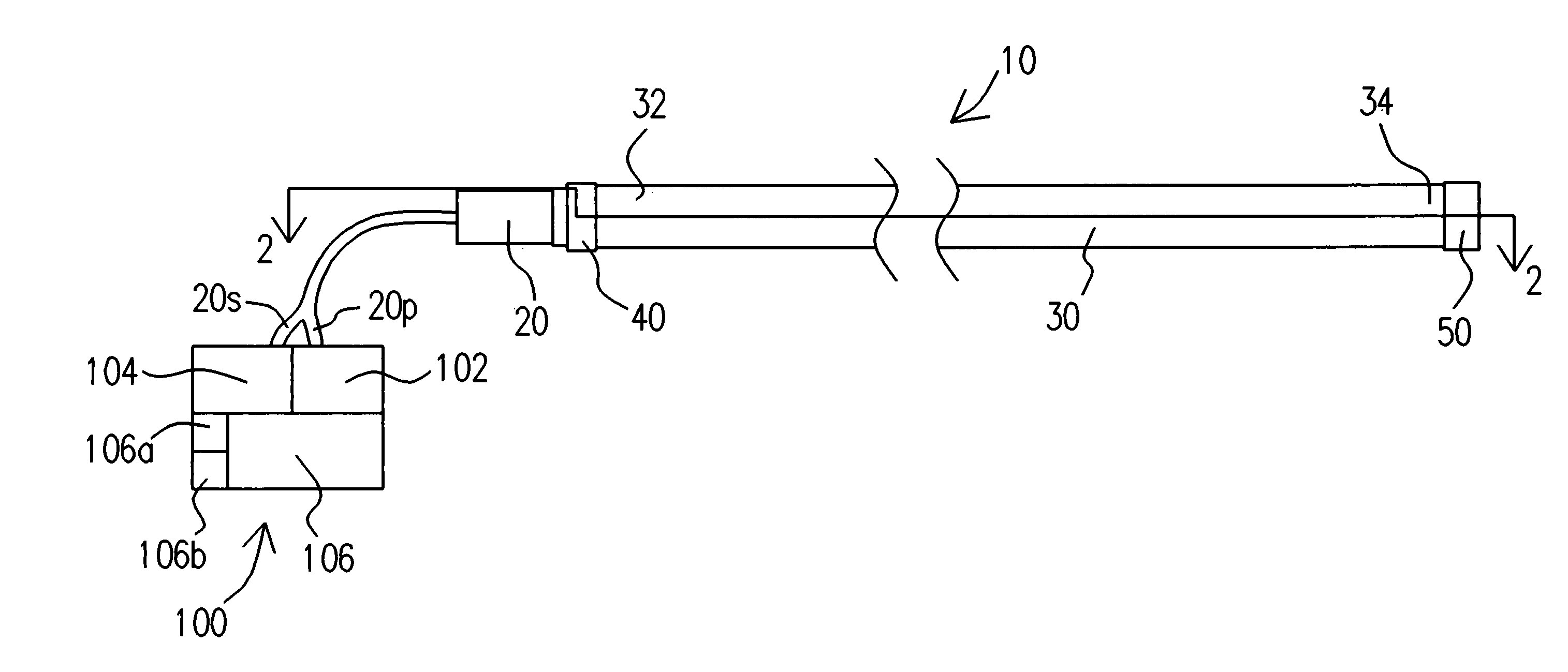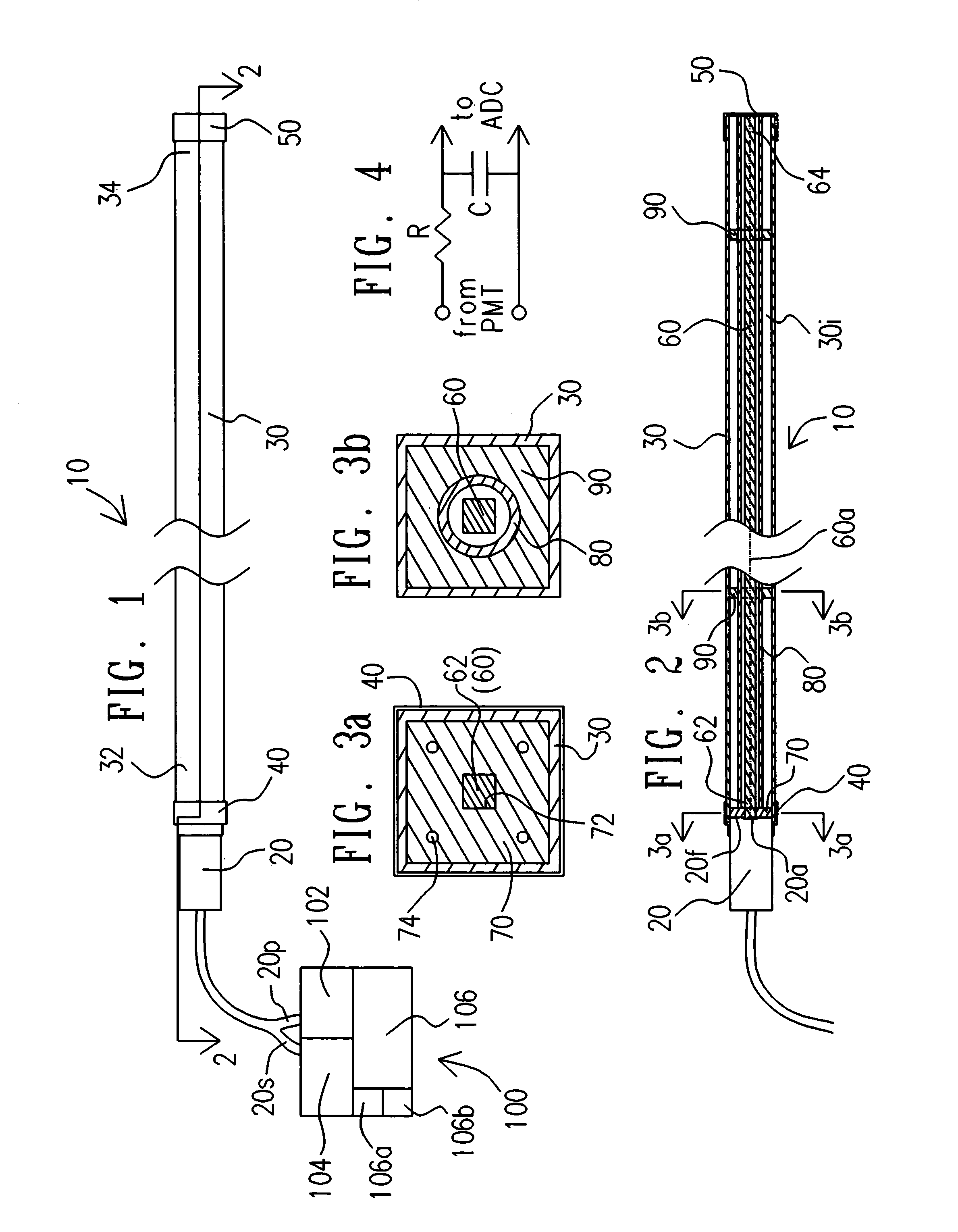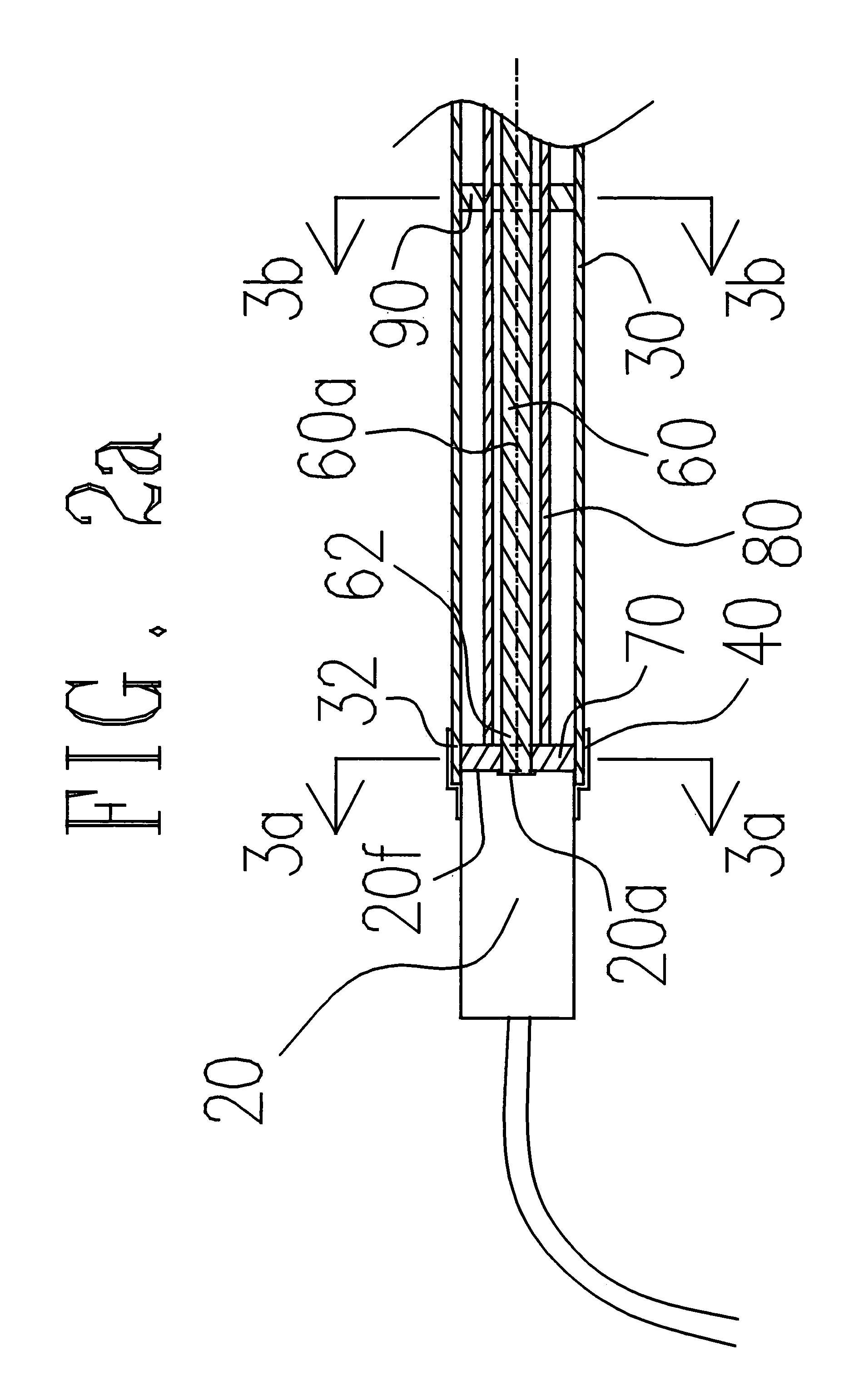Fast, simple radiation detector
a radiation detector and fast technology, applied in the field of scintillating fiber radiation detectors, can solve the problems of increased personnel and training, increased cost of detection equipment, and threat to the u.s. homeland security, and achieve the effect of hard cheating
- Summary
- Abstract
- Description
- Claims
- Application Information
AI Technical Summary
Benefits of technology
Problems solved by technology
Method used
Image
Examples
Embodiment Construction
[0035]Referring now to the FIGS. wherein like reference characters indicate like elements throughout, there is shown in FIGS. 1, 2, and 2a a scintillating fiber radiation detector for homeland security 10 comprising a photomultiplier tube 20 (PMT; or other light intensity measuring device) mounted or connected to a first end 32 of a rigid (or substantially rigid) structure 30 in a substantially relatively immovable manner by means of a light-proof connection 40. In the preferred embodiment of FIGS. 1, 2, and 2a, the rigid structure 30 is hollow and takes the form of a thin-walled, one-piece, rectangular or square cross-section rigid or substantially rigid aluminum tube. (Accordingly, in the description which follows, the rigid structure 30 will be referred to as tube 30.) A second end 34 of the rigid tube 30 is covered by a light-proof cover or cap 50. The presence of the photomultiplier tube 20 and the light-proof connection 40 at the first end 32 of the tube 30 combined with the p...
PUM
 Login to View More
Login to View More Abstract
Description
Claims
Application Information
 Login to View More
Login to View More - R&D
- Intellectual Property
- Life Sciences
- Materials
- Tech Scout
- Unparalleled Data Quality
- Higher Quality Content
- 60% Fewer Hallucinations
Browse by: Latest US Patents, China's latest patents, Technical Efficacy Thesaurus, Application Domain, Technology Topic, Popular Technical Reports.
© 2025 PatSnap. All rights reserved.Legal|Privacy policy|Modern Slavery Act Transparency Statement|Sitemap|About US| Contact US: help@patsnap.com



